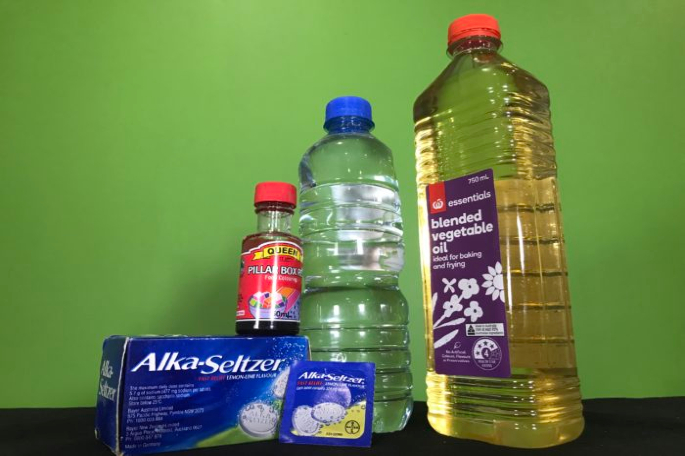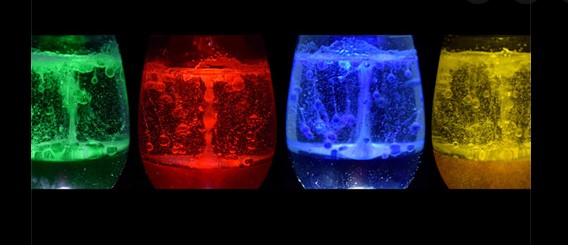 |
Science talk With Chris Duggan House of Science |
Chris Duggan is a scientist, educator, mother of two adult daughters, and farmers wife. After many years teaching secondary school Science and Chemistry, she switched her focus to primary schools by setting up a charity called House of Science in 2013. This large organisation supports thousands of teachers with science resource kits and professional development.
See what Chris has to say in her latest blog below.
Grandparents and Parents will take a walk down memory lane with this fun science activity as they travel back to the 1960s and 1980s with their grandchildren/children.
Have you ever seen an electric lava lamp? They were all the rage in the 1960s and again in the late 1980s as 'groovy” room decorations. A few minutes after switching them on, blobs of coloured liquid floated toward the top of the lamp and then back down.
With this fun science experiment, you can create your own non-electric version of the lava lamp using the fizzing power of Alka-Seltzer tablets. You will also use hot and cold temperatures and observe how changing the temperature affects the colourful blobs inside your lava lamps.

Equipment:
- Tall identical bottles e.g., ideally empty, clear 1.5 L plastic bottles.
- Knife
- Cutting board
- Timer or clock that shows seconds
- Water
- Food colouring
- Vegetable oil (enough to fill your jars/bottles nearly full)
- One Alka-seltzer tablet. Only one is needed for both bottles.
- A way to make one jar/bottle hot and one cold, e.g., a large bowl of hot water and access to a fridge/freezer.
Instructions:
1. Fill each bottle with 3-5 cm of water and add 5 drops of food colouring.
2. Fill each bottle with vegetable oil, please make sure each of them is at least ¾ full of oil.
3. With one of the bottles, place one in your bowl of hot water and the other in the fridge/freezer. Parent guidance is needed when using hot water.
4. While you are waiting for your bottles to heat up and cool down, use your knife to cut your Alka-Seltzer tablet In half.
5. Remove your bottles from the hot and cold areas and drop one-half of the tablet into your hot bottle. Once the tablet hits the water at the bottom of the bottle, use your timer or clock to record how long it takes for the tablet to dissolve.
6. Repeat step number #5 with the cold bottle.

NB:
How did the two reactions look? Do you notice other differences in how the reaction happens in the colder liquid versus the hotter liquid? Why do you think you got the results that you did?
Clean-up:
When you are finished with your lava lamps, do not pour them down your drains as the vegetable oil can lead to clogs in the sewer system. Instead, pour the contents of the lava lamps into a compost. If this isn't an option, then simply screw the cap on tightly and throw the lava lamp jar in your rubbish bin.
The Science Behind:
The ingredients in Alka-Seltzer combine with water to form a gas called carbon dioxide. The oil and Alka-Seltzer do not combine in this way though.
The Alka-Seltzer tablets sink through the vegetable oil until they reach the layer of coloured water. The gas is lighter than water and oil, so it bubbles up, taking a bit of the coloured water with it as it glides through the oil layer.

Once the bubbles reach the top of the bottle, they burst to release the carbon dioxide gas and then the colourful blobs sink to the bottom of the bottle now without carbon dioxide gas. The effect is reminiscent of a lava lamp.
In your hot water bottle, you would have observed the Alka-Seltzer tablet dissolving quickly resulting in lots of rapid bubbling and an energetic lava lamp display.
However, with the cold water, it would have had the opposite reaction resulting in a calmer and longer-lasting lava lamp effect. House of Science Resource Kits - https://houseofscience.nz/science-kits/
This activity is also featured in our House of Science resource kit 'Fireworks/ Pahūahi."
'From Fireworks in a test tube to changing the colour of a candle flame, students will love the exciting activities in this materials world box.
"There are many opportunities to predict, observe and explain natural phenomena, especially in the context of fire. What is the fire triangle? What are the different zones in a candle flame and what is happening in each zone? What creates the colours in fireworks? All these questions are answered in a safe but engaging way. This kit is a great springboard for creative writing and art."
House of Science NZ is a charitable trust and relies heavily on the support and funding of the community via donations, sponsorship, and volunteers.
Help today to pave the way for our future generations by making a charitable donation to House of Science NZ at https://givealittle.co.nz/org/house-of-science-nz For more information on how to get involved , head to our website or email info@houseofscience.nz.


